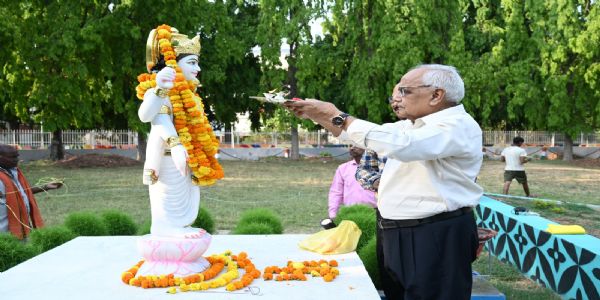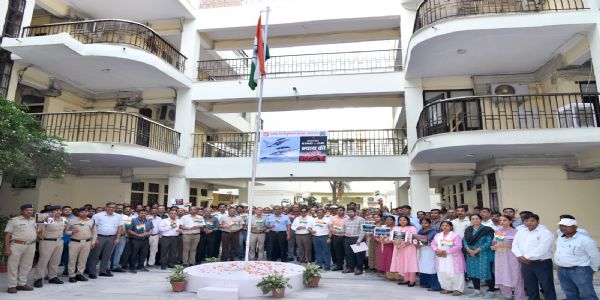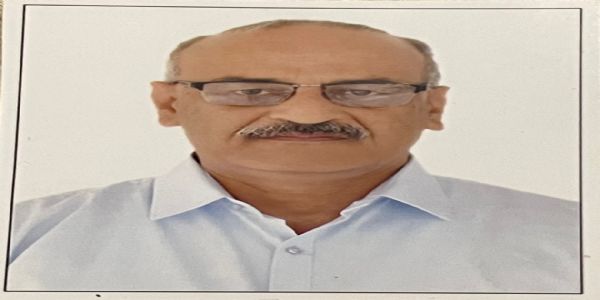
Lucknow, 14 May (HS):“The bullets that echoed in the serene valley of Pahalgam were
not just aimed at tourists. They were fired into the very idea of India. Its
diversity, its constitutional secularism, its unity. This was not a routine act
of terrorism. It was continuation of ideological warfare, planned by those in
Rawalpindi believe that Pakistan’s existence is validated only when India
bleeds. Behind the trigger wasn’t just a militant’s finger. It was the invisible
hand of an ideology stuck in time, one that refuses to acknowledge the tectonic
shifts in global morality, geopolitics, and regional consciousness,” says Brig
Rakesh Bhatia, a veteran of the Indian Army with over three decades of service,
has served along all borders. His deep interest in geography, history, and
culture shaped him into a keen observer and an accomplished intelligence analyst,
offering valuable insights into regional security and strategy.
To understand the reason of tacit endorsement
ofPehalgamterrorist attacks by Pakistan’s Chief of Army Staff General
AsimMunir, one must trace the ideological lineage back to Mohammad Ali
Jinnah.While speaking in Kanpur, he had declared “I am willing to let two crore
Muslims in India be “smashed” to liberate seven crore others” (in present day
Pakistan). This was a statement that exposed the transactional and sacrificial
nature of Pakistan’s founding ideology. The statement reveals a fundamental
truth that the vision of Pakistan was never about safeguarding all Muslims but
about elevating a privileged class under the pretext of Islamic unity.
Pakistan continues to treat Indian Muslims, including Kashmiri
Muslims, as mere instruments in its geopolitical game. Every provocation, from
cross-border infiltration to high-profile terror attacks like the one in
Pahalgam, is less about protecting Kashmiri rights and more about reigniting a
partition-era validation that Pakistan’s existence was necessary. The Pakistani
elite has never truly accepted Indian Muslims as equals in faith or cause. They
are only remembered as useful cannon fodder for Pakistan’s narrative of Islamic
victimhood and strategic grievance.
The terror attack in Pahalgam is a continuation of Pakistan’s
long history of sacrificing the Kashmiris for its ideological struggle. In
1947, tribal lashkars sent by Pakistan looted, raped, and murdered
indiscriminately the local Muslims as well. In 1965, Ayub Khan launched
Operation Gibraltar believing that disguised Pakistani troops would trigger a
mass uprising in the Valley. That uprising never came. Pakistan misjudged
Kashmiri sentiment again, and faced a full-scale war.
In 2025, Pahalgam represented a Kashmir that was healing.
Tourism was booming. Violence had declined. This emerging peace posed an
ideological threat to Pakistan. A Kashmir moving on from separatism weakens
Pakistan’s narrative of being the saviour of Muslims. The attack on Pahalgam
was not just an act of terror but a reaction to the Valley’s return to
normalcy. Pakistan struck not because Kashmir was burningbut because it was no
longer burning.In the decades that followed, from sponsoring militancy in
Kashmir, Kargil, Mumbai, Uri, Pulwama, the idea remained to provoke India,
ignite communal fires, and pretend to be the saviour of Muslims. But the mask
is wearing thin. Something has shifted, slowly, but irreversibly. India no
longer plays by Pakistan’s script.
Indian response to the Pahalgam attack, Operation Sindoor, has
been decisive. Initially it targeted terror camps without bombast or bravado.
This wasn’t just a tactical operation. It was a strategic message.
India’s approach wasdesigned not just to destroy terror
infrastructure, but to also impose costs on Pakistan’s military planners. It
continues to show them that the pain they are inflicting on India will be
returned manifold. It is punitive yet calibrated. It demonstrates that
deterrence lies not in loud threats, but in silent, measurable consequences.
While India chose
specific targets to make its point, Pakistan’s planners continues to provoke
communal passions within India by targeting civilians. This contrast between
surgical retaliation and ideological barbarityis the clearest indicator of the
two nations’ moral divergence.
From Nehruvian idealism toOp Sindoor, India has gradually
evolved. On this occasion, it blended diplomacy, deterrence, intelligence,
Kinetic and non-Kinetic means. More importantly, it has internalised the need
to insulate communal harmony from external provocation. That is what Pakistan’s
planners fear the most. Our weapons, as well as our unity.
Pakistan, in contrast, remains shackled to its past. With the
economy in tatters, IMF loans, and traditional allies hedging their bets, Munir
needed something and it could be anythingto divert public anger. Pahalgam was
his distraction. He hoped to ignite Hindu-Muslim riots across India,specially
post wakf bill. The leaders in Pakistan wanted to show their public that they
were the “chosen ones,” still upholding the legacy of a nation created in the
name of Islam.But his plan failed.
Operation Sindoor is not just a chapter. It is a marker of a
long campaign that will continue. India must remain vigilant, alert to new
provocations and emerging threats. And above all, we must resist the pressure
to respond in haste or hatred. The strength of our unity, the wisdom of our
restraint, and the precision of our response are our real weapons. And we must
continue to wield them with care. A united India, armed with strength and
purpose, is unstoppable. Our rise as a superpower is not a dream but our
destiny. No enemy, no terror, no force can stall it now.
Hindusthan Samachar / Abhishek Awasthi








